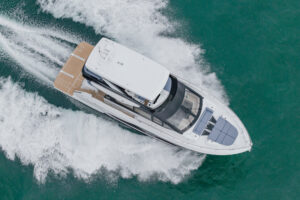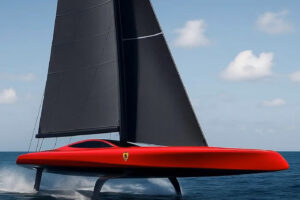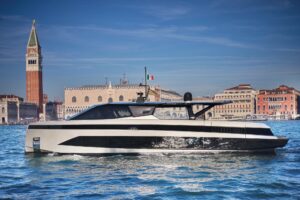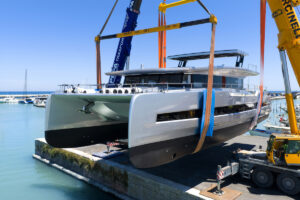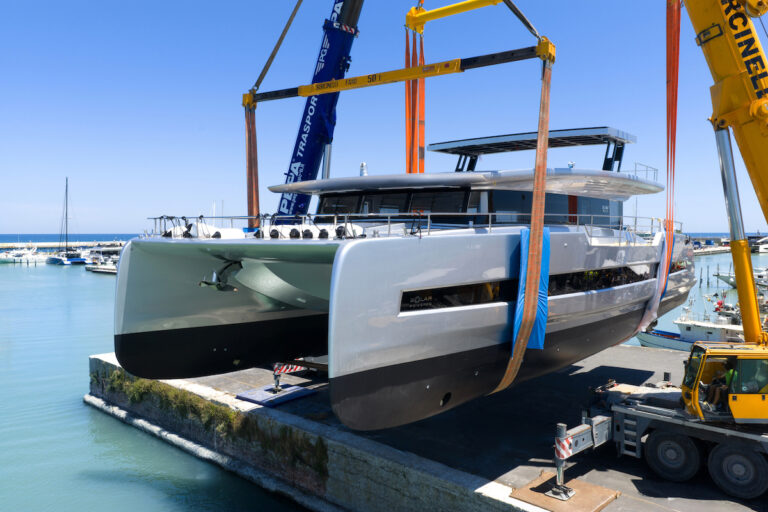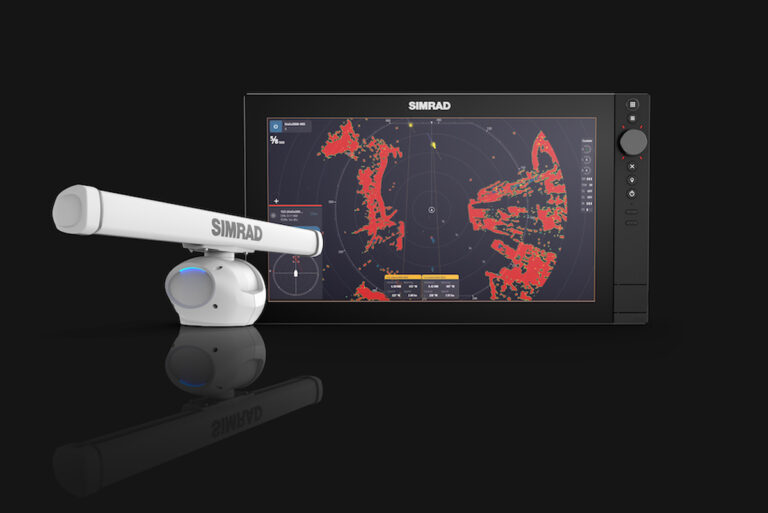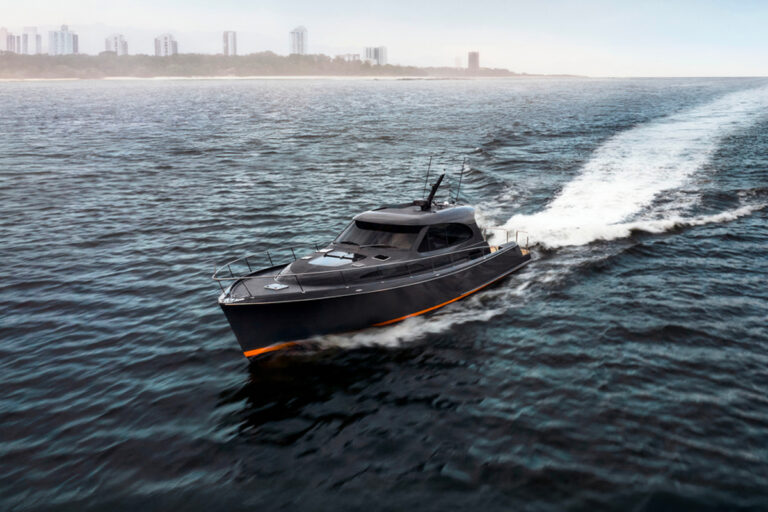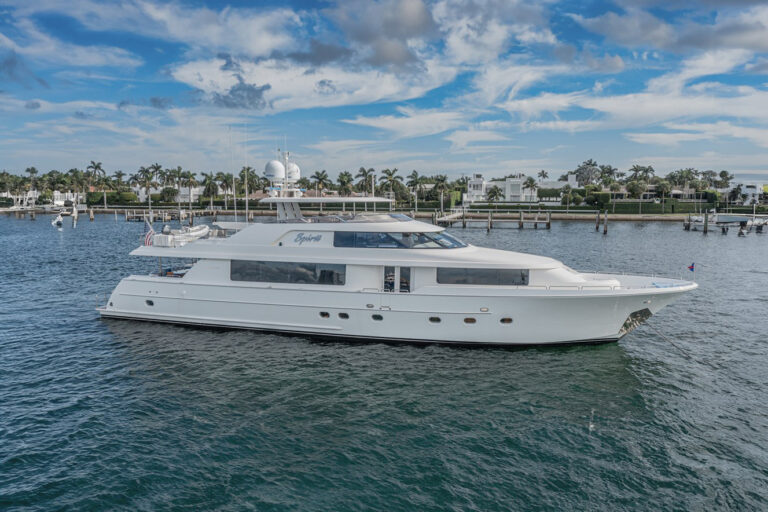
ytgjan09elect525.jpg
As we planned the electronics array for the new 72-foot Merritt that we are building, one of the most important things in the entire project for me was to have the best transducers, echosounder, and sonar technology available within six months from the time of my research on the products.
The key is timing. I know that technology advances quickly and I didn’t want to select and order a piece of gear in June and have it be six months behind the curve in December, installed for our proposed launch just as the hot new replacement comes out. Ultimately what I wanted was to choose components that would be ready in December and be launched in February at the Miami Boat Show.
Not everything is new, though: We would be using a Simrad ES60 echosounder, same as on our 58-footer. Familiarity is always good-why struggle to learn a new system when you are comfortable with the one you have? We will display the information through Simrad’s GB60 Glass Bridge suite, so I have all the flexibility to view the information on any screen in concert with all of our nav data.
I knew that I wanted wide-beam and split-beam technology for my sounder. In a typical transducer the elements in the unit blend together to give you a picture of the bottom and, if you are over them, bait schools or fish that mark as suspended targets in the water column.
With a single-beam transducer, all you know is that you are or have been over a mark, but you do not know where it is relative to the bow or stern of the boat. Splitbeam technology solves this by-putting it simply-holding four transducers in one housing. This allows the information being recorded to be split into four quadrants, port bow and stern and starboard bow and stern. We can look at the picture as if we are looking through the crosshairs of a rifle scope, so that we can see where the bait or fish is, relative to the keel of the boat, and if it is forward or aft.
For my main transducer, I chose a commercial-grade Simrad 38-200 kHz Combi-Wide. This unit is used on many scientific research vessels, chosen for its accuracy and its ability to measure a wide swath of the water column as well as bottom hardness. Knowing how much bait we are seeing-and identifying its size and type- will help us to match the hatch. Having top-quality gear also helps to keep you in the zone where you can get bit. The more you see beneath you, the better chance you have of making something happen to get a bite. While I obviously think like a fisherman, this kind of bottom detail could help any yachtsman interested in what’s beneath his boat.
Commonly referred to as “cone angle,” the transducer beam width is the actual width of the beam the transducer emits. A narrow or normal beam width is considered to be a typical 6- to 20-degree transducer such as the popular B260 Airmar 50/200 kHz dual-frequency unit or the Combi-C 50/200 kHz dual frequency by Simrad. A wide beam width, which is an excellent choice for sportfishing, or for anyone who wants to see more of what’s down there, would be any cone angle over 25 degrees, such as the 38/200 kHz Combi Wide by Simrad, which has a 31.5-degree beam width in both frequencies, along with Airmar’s B260 Wide Beam, which is a 50/200 kHz dual frequency with nearly 30 degrees of beam width.
The wider the beam width, the greater the area of coverage. For instance, if we are hunting sailfish in 120 feet of water, the 200 kHz 30-degree wide beam will cover a diameter of approximately 64.3 feet on the bottom, where the typical 7-degree cone will cover a diameter of 14.6 feet on the bottom-not even as wide as the beam of the average 50-foot sportfisherman. The 200 kHz wide beam, with its 31-degree cone angle, covers 20 times more area than the conventional 200 kHz transducer.
However, the bottom resolution decreases as the water gets deeper. What this means is the wide beam is best suited for searching for baitfish or individual fish suspended in the water column, and the narrow beam is best for looking at bottom detail. According to the folks at Simrad, the 200 kHz wide beam will work best to a depth of 300 feet but you can see much deeper in 38 kHz. Obviously there is a correlation between the frequency of the transducer and the beam width. Typically, the lower the frequency, the wider the beam width. Higher frequency transducers have narrower beams, making great depthsounders, while the wider-beam lower frequencies make for better fishfinders.

| | |
The sound waves or pulses emitted from our echosounder transducers are bounced off objects such as the bottom or fish and returned, as the echo, to our transducers, which send the data to the sounder module. The data on fish and bottom are then converted to images on our screens. Since the flesh and bones of a fish are mostly water, these signals don’t bounce directly off their bodies back to the transducer. We are actually marking the air in the gills and air bladder of the fish.
This new electronics array I’m discussing is going on our new project. The build has been very pleasant and smooth, the result of good planning and a top-notch build crew at Merritt’s. The excellent results we are seeing can be directly attributed to the thorough execution of all the elements in the proper order. Once complete, they’ll yield a great overall product. I have to admit the build crew shook their heads when I showed up with some rather large and highly advanced transducers to be installed in the bottom of the boat. After a bit of head-scratching and looks that said this guy is crazy, 26-year Merritt veteran and ace carpenter Casey Richards proclaimed, “This is Merritt’s, we can do anything-no problem.”
Sure enough, Richards fabricated a pair of fairing blocks to house the large transducers. They worked perfectly and accomplished the goal of getting them into the hull. Once that was done I knew when I started fishing, I’d be seeing things no one else could. Sound travels well through water, yet poorly through air. So any air bubbles sweeping across the bottom of the hull will cause a sounder to perform poorly or not at all, making transducer placement and installation critical. The use of a fairing block is essential to get the unit away from any “noise” caused by the boat moving.
Now for the really cool stuff. On our 58-foot Merritt I had a side-scan searchlight sonar that I really liked, but things have changed since that unit was released. I dug deeper to find a solution. Little did I know I’d find a goldmine in one product from the folks at Electronic Navigation in Auckland, New Zealand. Having spent some time in Auckland years back building a boat, I was keen to check out the WASSP system they developed. WASSP stands for Wide Angle Sonar Seabed Profiler, and the beauty of this unit is that it is a side-scan sonar and multibeam sonar, and offers real-time 3-D seafloor profiling and 2-D bathymetric contour mapping- all in one machine. It took me three machines on the 58 to get this much information. What I really liked about the WASSP is that I could get the side-scan data and the bottom mapping all in one shot and play it over both the GB60 and my OLEX plotter, both of which I had on the 58 as well.

| | |
The WASSP offers excellent performance, by using separate transmit and receive arrays for better sensitivity. With profiling 90 times faster than conventional single-beam echosounders, the WASSP offers more accurate 3-D seabed mapping, as well as a 120-degree sonar view through its 112 beams, offering you visibility of targets to port and starboard. With a feature called triple-beam view, the WASSP has the ability to display the port, starboard, and center views together so you really get the whole picture. With digital signal processing, the WASSP will show bottom hardness variations so you know your terrain under the boat and can plan accordingly. Another neat option is to be able to use the unit in a single-beam display with variable beam width of 5 to 40 degrees.
It’s an exciting time to commission a new boat, with a host of new technology that will provide us with loads of underwater data and result in huge fishing opportunities. Knowing what you’re putting on during the build, and integrating new technologies to access available information will only enhance our overall experience on the water. These technologies not only significantly increase our situational awareness while fishing, but also when we’re navigating. These amazing machines offer a different view of the sea around us-and below us-than anyone has ever had before.
| Looking Down Check out these sites when planning your build. www.airmar.com www.simrad-yachting.com www.simrad.com www.wassp.com |

